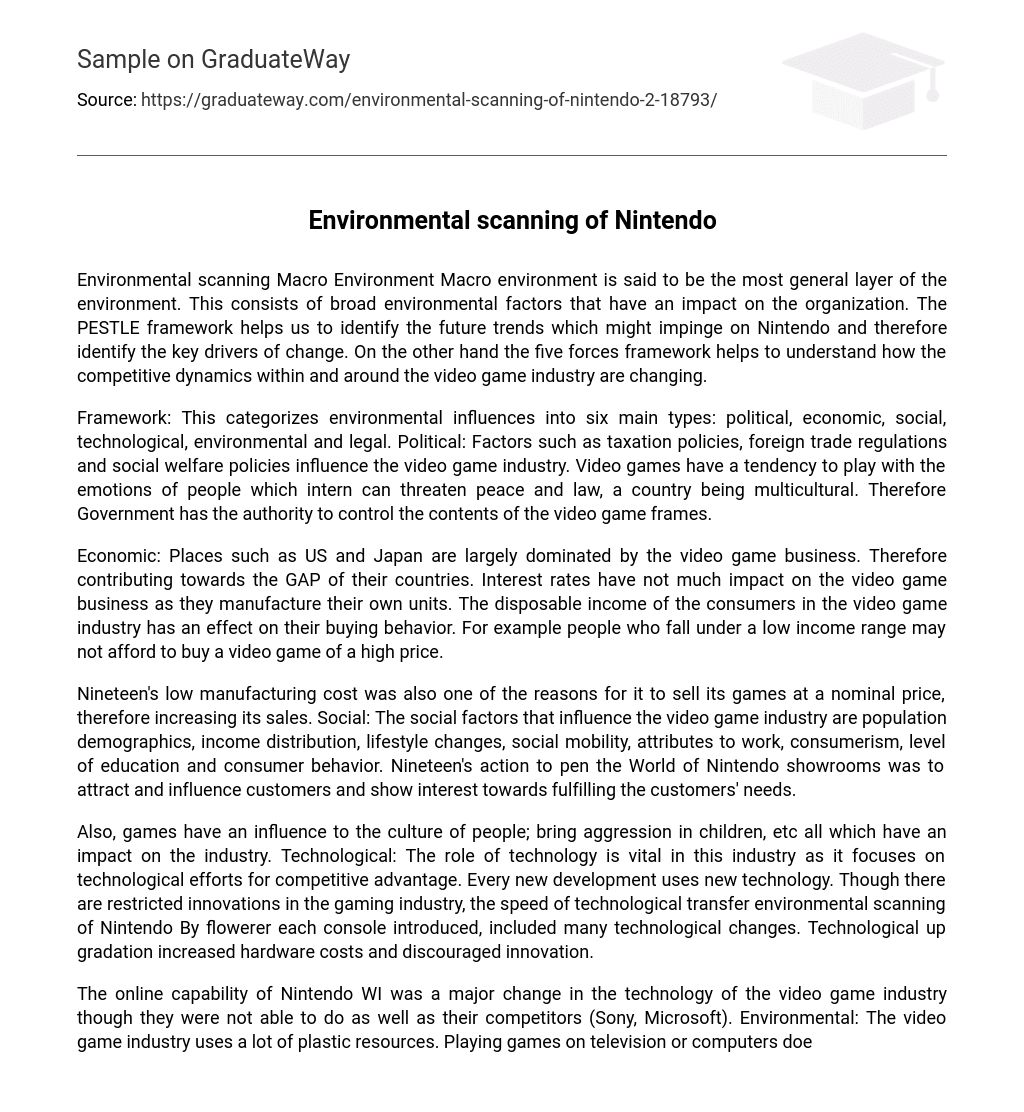Macro environment is said to be the most general layer of the environment. This consists of broad environmental factors that have an impact on the organization. The PESTLE framework helps us to identify the future trends which might impinge on Nintendo and therefore identify the key drivers of change. On the other hand the five forces framework helps to understand how the competitive dynamics within and around the video game industry are changing.
Framework: This categorizes environmental influences into six main types: political, economic, social, technological, environmental and legal. Political: Factors such as taxation policies, foreign trade regulations and social welfare policies influence the video game industry. Video games have a tendency to play with the emotions of people which intern can threaten peace and law, a country being multicultural. Therefore Government has the authority to control the contents of the video game frames.
Economic: Places such as US and Japan are largely dominated by the video game business. Therefore contributing towards the GAP of their countries. Interest rates have not much impact on the video game business as they manufacture their own units. The disposable income of the consumers in the video game industry has an effect on their buying behavior. For example people who fall under a low income range may not afford to buy a video game of a high price.
Nineteen’s low manufacturing cost was also one of the reasons for it to sell its games at a nominal price, therefore increasing its sales. Social: The social factors that influence the video game industry are population demographics, income distribution, lifestyle changes, social mobility, attributes to work, consumerism, level of education and consumer behavior. Nineteen’s action to pen the World of Nintendo showrooms was to attract and influence customers and show interest towards fulfilling the customers’ needs. Also, games have an influence to the culture of people; bring aggression in children, etc all which have an impact on the industry.
Technological: The role of technology is vital in this industry as it focuses on technological efforts for competitive advantage. Every new development uses new technology. Though there are restricted innovations in the gaming industry, the speed of technological transfer environmental scanning of Nintendo By flowerer each console introduced, included many technological changes. Technological up gradation increased hardware costs and discouraged innovation. The online capability of Nintendo WI was a major change in the technology of the video game industry though they were not able to do as well as their competitors (Sony, Microsoft).
Environmental: The video game industry uses a lot of plastic resources. Playing games on television or computers does consume a lot of power. Nintendo therefore see to it that their games utilize low power. On the other hand protecting the environment and practicing a “green” lifestyle is a value many of today’s parents are trying to teach heir children. Nintendo facilitates in that effort through the creation of “Super Mario Sunshine, which challenge players to improve the environment around them.
Legal: The legal issues faced by the video game industry include trademarks, copyrights, licensing, online ownership, revenue recognition and demands of intellectual property. The other issues that can be considered are product and health safety. It has become an accepted practice for the console manufacturers to lose money on the hardware and to recover the loss by charging high licensing fees to game publishers and developers.





